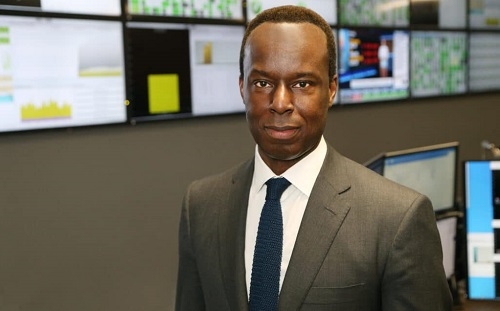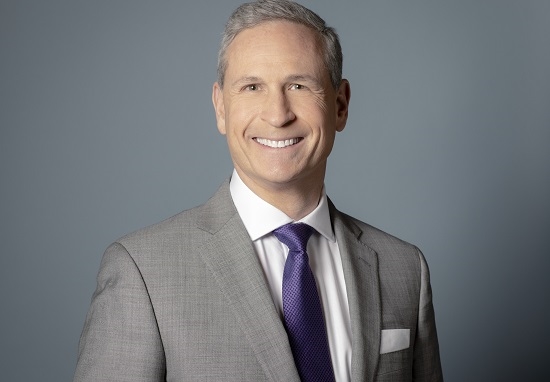Part Two: Cboe president Howson outlines European, Asian plan
David Howson has just moved to Chicago to become president of Cboe Global Markets, from where he talks to Luke Jeffs in the second of a two-part series. (Continued from Tuesday)
European Expansion
A project close to Howson’s heart is Cboe Europe Derivatives (CEDX) which launched in September last year when he was still head of Cboe Europe, the position he held before being bumped up to group president.
CEDX, Cboe’s first European derivatives venture, is an ambitious bid to break into the ultra-competitive European equity futures and options sector by replicating the US options market structure, a template Cboe thinks should resonate with quant-based hedge funds.
Almost a year after launch, however, volumes are thin. Amsterdam-based CEDX traded just 1,872 lots in June, according to the exchange.
Howson said: “The onboarding process has been slower than originally projected and the key driver for that is the impact of the geopolitical situation in Europe linked to the war in Ukraine.
“There was the event itself and the subsequent sanctions, so firms were in mandatory mode in terms of what they need to get done and that has a tail on it which led to the reprioritisation of non-mandatory strategic projects including CEDX in some cases.”
The Cboe president said the management team remain convinced that CEDX is the right model.
“We continue to execute on the plan we have in place. That’s single stock options in 2023 and a continued push to onboard more futures market-makers to make the futures picture even better than it already is. In sequence, we will also improve the option pricing.”
He added: “Alongside that, we will deliver the usual tools necessary when you are building liquidity in a brand-new product exchange and clearing house, including incentive schemes to help encourage flow in the new products as you bring them on.”
Howson continued: “We always said this will be a journey so, from our perspective, this is just part of the process of building a brand-new product exchange and clearing house from scratch.
“We’re not going to judge it on the merits of a 12-month period, particularly one with the shocks that we have seen. The value proposition is still the same as it was two years ago, nothing has changed.”
He added: “The opportunity and the appetite from customers remains strong, but the timing is the only difference. In reality, our expectations have been pushed out by a year at this point so the three year guide we gave is now probably more realistically a four year guide.”
Further afield
Beyond Europe, Cboe is also pushing hard in Asia, specifically Japan, where it has a small equities market share, and Australia, where it is more established.
Howson, who was head of Asia and Europe before becoming president, said: “Our Japanese market share grew from 2.5% in Q2 2021 to 3.5% in Q2 2022 which is meaningful in terms of the percentage but also in terms of the “why?” which is due to a market-maker scheme to introduce incentives to encourage more competition for Japanese retail flow.”
Cboe Global Markets completed in June last year its acquisition of Chi-X Asia Pacific, which operated equity markets in Tokyo and Sydney. The group has since announced its plan to move the two former Chi-X markets to its main technology platform.
Howson continued: “A tailwind in Japan is the announcement of a best execution requirement for retail brokers which comes into force in January 2023, with a one year grace period. The re-platforming of technology onto Cboe technology and the introduction of Cboe BIDS are also planned for Q4 2023.”
Cboe acquired in early 2021 BIDS Trading, an equity block matching engine. Howson said the former Chi-X Australia business will move to Cboe technology in February next year and Cboe BIDS will be rolled out in Australia thereafter.
Howson (pictured below) said Cboe has a strong foothold in Australia: “We’ve seen an increase in market share there to 17% from 16% over a one-year period and we’ve had some good wins around crypto ETPs. The listings business is doing well and winning about 30% of ETPs listings in Australia.”
The Cboe president said the plan for Australia is consistent with the group’s strategy in Canada where it acquired a dark pool called MATCHNow and moved that to its technology in February this year before starting to roll out of BIDS. On June 1 2022, Cboe acquired Canadian securities exchange Neo.
Howson said: “The interesting thing about the Cboe BIDS angle is since its launch in Canada we’ve added European buy-side clients who want to trade Canada and Canadian buy-side clients that want to trade Europe, extending access to and from both geographies.
“To further illustrate that point, with the announcements that we are bringing BIDS to Australia, we’ve had superannuation funds that want to begin onboarding before the launch to trade the rest of the markets globally. So that’s the playbook, we have multi-directional flow from one jurisdiction to another over that network.”
Acquisitive prospects
Howson said Cboe sees acquisitive and organic growth working in tandem: “Nine acquisitions in two years takes us up to 26 marketplaces around the world. The drivers for the acquisitions have been extending our geographic footprint, expanding our diverse set of asset classes, and accessing new customer sets that we hadn’t previously addressed fully.
“We see the combination of M&A and organic initiatives as inherently complementary, fuelling future growth at Cboe. In terms of our ambition to be the world’s largest securities and derivatives network, we are now in every major equities market that is open to competition. For instance, we have meaningful footholds in Canada, Australia, Europe and the US.”
Howson said Cboe’s plan when eyeing a new jurisdiction is to establish market share in the existing equities space, launch and then build up adoption of its own equity indices and, then, launch derivatives based on those indices.
“The playbook that you saw us successfully utilise in Europe was to start with cash, add data products and off those data products launch derivatives. That flywheel, that ecosystem, enables procyclical growth. So with acquisitions, we always think about them in that frame of reference: Can we grow by asset class, geography or general access to products?”
He added: “That said, we’re focused on integration right now, we’ve got a lot to do and integrations take a lot of work and focus. We don’t generally buy things and leave them as they are, rather we look to integrate because we think that is the best way to develop sustainable growth out of acquisitions.”
Found this useful?
Take a complimentary trial of the FOW Marketing Intelligence Platform – the comprehensive source of news and analysis across the buy- and sell- side.
Gain access to:
- A single source of in-depth news, insight and analysis across Asset Management, Securities Finance, Custody, Fund Services and Derivatives
- Our interactive database, optimized to enable you to summarise data and build graphs outlining market activity
- Exclusive whitepapers, supplements and industry analysis curated and published by Futures & Options World
- Breaking news, daily and weekly alerts on the markets most relevant to you




